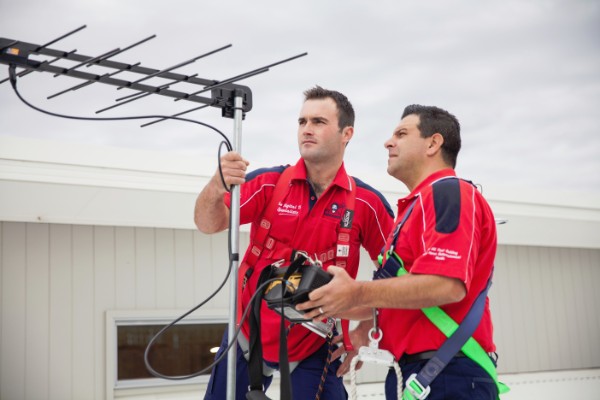Once you install a high quality antenna, the idea of getting free HDTV becomes possible. Instead of spending money on monthly pay TV and satellite services, all you have to do is spend on a one-time antenna installation then start enjoying free programming.
To have the best free HDTV in your location, it’s important to be meticulous when choosing an antenna. Before you rush to the store and buy a TV antenna, below are several key factors you should consider first:
1. Channel availability
The first thing to do is to figure out what channels are available in your location. If you live near the metro, you’ll probably have a lot to choose from including major network affiliates such as NBC, Fox, and CBS. Use sites like AntennaWeb or TV Fool to look into what channels are available, just type in your address and it will generate a list of channels nearby.
If you have different channels coming from all sides, you may want an omnidirectional antenna. This option lets you get the most channels from each direction but you may have to sacrifice signal quality in the process.
2. Size and type
If you live in a high-rise apartment in the city, an indoor antenna that you can simply place on top of your television cabinet may work for you. However, if you live far from broadcast towers, you may find that an outdoor antenna mounted on the roof may be necessary.
Usually, renters need an antenna with a relatively small scale that can be removed with ease, while homeowners prefer something much larger and permanent.
3. Ease of installation
With regards to an indoor antenna, all you have to do is plug the unit into a digital converter box attached to a TV set. Then, position the antenna in the right direction to get the best reception. Alternatively, outdoor antennas will require you to climb up on a high place such as the roof to mount and keep it in position.
For risky antenna installations, it’s wise to let an aerial specialist handle the job rather than attempt to do it yourself.
4. Cost
Don’t rush to purchase without comparing costs between TV antennas. Keep in mind that an expensive unit doesn’t always mean greater range or gain. Although, of course, you can expect to pay more for an antenna which is omnidirectional since it is able to pick up signals from multiple directions.
If you reside east of all the broadcast towers in your town, you can go for a less expensive antenna that can get signals from one direction. This will work just as well as expensive antenna models.
5. UHF or VHF
You have to decide what your antenna should be capable of – whether it’s picking up very high frequency (VHF) or ultra-high frequency (UHF) channels. You may not be able to choose both as most antenna models on the market are only designed for one type.
Fortunately, several VHF channels are network affiliates and broadcast powerful signals. This means that even if your antenna doesn’t specialize in VHF channels, it can still pick them up as long as you’re near the source. If you’re aware that the channels you want are low-numbered ones, make certain that you select an antenna that can clearly pick them up.
After you’ve bought your antenna, use your TV to scan for all available channels. Note the quality of each channel, and if everything’s good, then you’re all set.
If the signal is bad or you know you’re missing something, you can try doing the following:
- Transfer your antenna to a different location or direction.
- Use a longer coax cable.
- Keep your antenna away from other electronic items or high-powered wireless gear.
- Add an amplifier to pick up channels far from your location.
Before you buy any equipment, always test them first and try to get input from the experts; then decide on what is best for you.
This way, you can ensure that you’ll end up with the right antenna that will enable you to cut the cord once and for all.
Once everything is up and running and you get to enjoy free HDTV, don’t forget to have regular pest control done to keep your cables protected from wire-chewing vermin.

